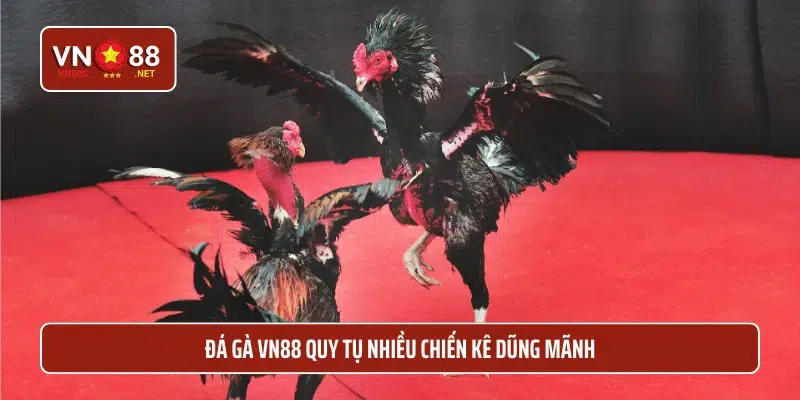SẢN PHẨM TẠI NHÀ CÁI







VN88 – SOI KÈO NHÀ CÁI BÓNG ĐÁ HẤP DẪN, HOT TREND NHẤT 2025
VN88 là một trong những nền tảng cá cược thể thao trực tuyến hàng đầu tại Việt Nam, mang đến cho người chơi một trải nghiệm tuyệt vời với đa dạng các môn thể thao như bóng đá, bóng rổ, e-sports và nhiều hơn nữa. Với giao diện thân thiện và các chương trình khuyến mãi hấp dẫn, VN88 không chỉ cam kết mang lại niềm vui cho người chơi mà còn giúp bạn tận hưởng những giây phút giải trí đầy thú vị và an toàn. Tham gia VN88 ngay hôm nay để khám phá những cơ hội chiến thắng thú vị và nhận thưởng hấp dẫn!

Link vào VN88 chính thức, không chặn mới nhất
Truy cập link VN88com chính thức mới nhất, đảm bảo không bị chặn. Thoải mái tham gia cá cược an toàn, đa dạng trò chơi và nhận khuyến mãi hấp dẫn ngay hôm nay!
Link chính thức, không chặn: https://trentonsocial.com/
Tổng quan thông tin về nhà cái hàng đầu VN88
Những thông tin liên quan về lịch sử hình thành hay giấy phép hoạt động luôn được hội viên quan tâm hàng đầu, cụ thể như sau:
Lịch sử hình thành

Năm 2015, VN88 chính thức ra mắt và đặt trụ sở chính tại quốc gia hàng đầu đã hợp pháp hóa hoạt động cá cược là Philippines. Tất cả các siêu phẩm cá cược xanh chín đều được chính phủ này bảo hộ nên người chơi tham gia an tâm tuyệt đối về mức độ an toàn.
Tới năm 2019, thương hiệu VN88 mới có mặt tại thị trường Việt Nam, được cấp phép bởi 2 tổ chức là First Cagayan Leisure và Pagcor công nhận. Đây cũng là minh chứng quan trọng khẳng định sự uy tín, chất lượng nhà cái. Đồng thời cũng là yếu tố để thương hiệu hoạt động công khai, minh bạch ở khắp các quốc gia, trong đó có Việt Nam.
Sứ mệnh và tầm nhìn
Sứ mệnh của VN88 com khi du nhập Việt Nam tới nay là luôn mang tới trải nghiệm cá cược trọn vẹn, an toàn chất lượng nhất. Xây dựng một cộng đồng trực tuyến văn minh lành mạnh để cùng giải trí, cùng kiếm tiền từ đam mê.
Bên cạnh đó, nhà cái luôn nỗ lực phát triển, mở rộng thị trường để trở thành sân chơi số 1 không chỉ ở châu Á mà còn châu Âu. Các sản phẩm cá cược mà thương hiệu đưa tới không chỉ đầy đủ mà còn chất lượng cao, đáp ứng hoàn hảo nhu cầu hội viên.
Những thành tựu VN88 đã đạt được
Mới hoạt động tại thị trường cá cược Việt Nam khoảng 5 năm nhưng VN88 không ngừng chuyển mình phát triển mạnh mẽ, với những thành tựu đạt được đáng nể phải kể đến như:
- Đơn vị tài trợ chính thức của giải đấu bậc nhất cúp vô địch Tây Ban Nha – La Liga.
- Hiện nay thương hiệu VN88 slot có mạng lưới dày đặc, hơn 13.000 đại lý đảm bảo cung cấp, phục vụ hội viên trọn vẹn và chu đáo nhất.
- Đối tác tiềm năng với những nhà phát hành game hàng đầu khu vực phải kể đến như VN Lottery, JILI, PG, WM,…..cùng 65+ những đơn vị phát hành game khác.

Mức độ phủ sóng VN88 tại các tỉnh thành Việt Nam
Từ năm 2019 tới nay, nhà cái đã không ngừng phát triển, thành công trong việc phủ sóng toàn bộ lãnh thổ của nước ta. Trong đó, theo thống kê 5 khu vực được top người chơi quan tâm, yêu thích bậc nhất đó chính là tại Kon Tum 100%, Lạng Sơn 54%, Gia Lai 38%, Phú Yên 35%, Đắk Lắk 29%,…
Số lượng hội viên tại nhà cái VN88 pro tổng hợp được là hơn 10 triệu người, với 500k lượt đăng ký, truy cập cá cược nhà cái thường xuyên mỗi ngày. Có khoảng 103k thành viên tải ứng dụng về điện thoại trải nghiệm. Đây là con số lý tưởng mà bất cứ nhà cái trực tuyến mới hoạt động nào cũng đều mong muốn có được.
Điểm danh 7+ sảnh game chất lượng không thể bỏ lỡ tại VN88
Với hàng loạt những siêu phẩm xanh chín chất lượng, đảm bảo sẽ thỏa mãn nhu cầu và sở thích của toàn bộ khách hàng. Cùng điểm qua một số sảnh chơi cực chất lượng, đông đảo hội viên tham gia trải nghiệm dưới đây:
Bắn cá đổi thưởng
VN88 tập hợp rất nhiều sinh vật biển cũng như loài cá quý hiếm để quá trình chinh phục đại dương của bet thủ thêm phần cuốn hút. Một số sinh vật phải kể đến như nàng tiên cá, cá heo, mập vàng, rùa xanh….cùng hơn 50+ boss khác. Mỗi loài sinh vật đi kèm sẽ cần vũ khí khác nhau, vì thế bạn cần hiểu rõ, nắm chắc, lựa chọn phù hợp để nhanh chóng kết liễu mục tiêu, rinh thưởng nóng hổi.

VN88pro Là sảnh chơi thú vị bậc nhất nên nhà cái đưa tới rất nhiều trò chơi với chủ đề hot để hội viên có thể lựa chọn. Mỗi game tương ứng đi kèm với từng cấp độ từ khó đến dễ để phù hợp với mọi đối tượng. Một số siêu phẩm game bắn cá như ngọc rồng, phát lộc, ngũ long, bắn cá kỳ lân,….
Thể thao
Nhắc tới sảnh chơi chất lượng cuốn hút bậc nhất, chắc chắn anh em không thể bỏ qua hạng mục cá cược thể thao VN88 đẳng cấp. Quy tụ đầy đủ các thể loại từ bóng đá cho tới bóng rổ, tennis, đua ngựa,…..Bảng kèo được hệ thống cập nhật liên tục, người chơi tham gia chỉ cần lựa chọn kèo phù hợp, rinh về thưởng khủng hấp dẫn, làm giàu nhanh chóng cho mình.
E-sports VN88
Ngoài thể thao, VN88 còn đưa tới siêu phẩm thể thao điện tử cực cuốn hút, cơ hội kiếm tiền lớn chưa từng thấy. Những giải đấu lớn nhỏ từ trong nước tới quốc tế đều cập nhật liên tục với nhiều thể loại hấp dẫn như LOL, PUBG, LOL,….Có đa dạng tỷ lệ kèo khác nhau, tùy vào nhu cầu mà người chơi lựa chọn hợp lý nhất.
Casino trực tuyến
Siêu phẩm tiếp theo tại VN88 nhất định bạn không nên bỏ qua đó chính là casino trực tuyến. Sảnh chơi đầu tư kỹ lưỡng chẳng khác nào sòng bạc quốc tế, đầy tinh tế, sang trọng và chuyên nghiệp.

Đặc biệt là mỗi bàn cược đều trang bị hệ thống camera hiện đại, phát trực tiếp mọi diễn biến của ván game, uy tín, minh bạch, hoàn toàn không có chuyện gian lận. Ngoài ra còn là sự kết hợp hoàn hảo giữa các dealer xinh đẹp nóng bỏng, dày dặn kinh nghiệm, chắc chắn sẽ giúp hội viên có không gian cá cược hấp dẫn, chất lượng nhất.
Nổ hũ VN88
Nổ hũ cũng là điểm dừng chân quen thuộc của cược thủ khi đặt chân tới VN88. Mỗi tựa game nhà cái đưa tới đều mang cốt truyện, hình ảnh sống động khác nhau, trải nghiệm chân thực thú vị nhất mà không bị nhàm chán. Không những thế, hệ thống còn thường xuyên cập nhật mã freespin, giúp bet thủ cải thiện vốn, tối ưu hóa cơ hội chiến thắng.
Đá gà trực tuyến
Sảnh chơi cực hot tại VN88 bạn không nên bỏ qua nữa đó chính là đá gà. Quy tụ đầy đủ những trận đấu chuyên nghiệp, bậc nhất trên thị trường với những trường gà đẳng cấp như Campuchia, cựa dao, cựa sắt,… Hệ thống livestream chất lượng, cập nhật liên tục từng trận đấu mỗi ngày để giới cược thủ dễ dàng đặt cược, vào tiền cho chiến kê mình yêu thích.

Xổ số lô đề VN88
Hội viên yên tâm thử vận may bởi VN88 luôn uy tín, sòng phẳng, sử dụng thuật toán RNF kiểm định chặt chẽ theo tiêu chuẩn quốc tế. Tất cả đều là ngẫu nhiên 100%, tuyệt đối không có chuyện can thiệp vào kết quả. Tỷ lệ trả thưởng cao hấp dẫn, đánh 1 có thể thu về gấp 99 lần.
Hiện nay nhà cái đưa tới rất nhiều loại hình xổ số lô đề khác nhau như: VN Keno, xổ số kiến thiết, số đề lào, Keno VIP,….Mỗi ngày có hàng 1000 lượt quay thưởng diễn ra để anh em thu tiền tỷ về túi.
Lý do hội viên nên truy cập trải nghiệm xanh chín tại VN88 ngay
Có vô vàn sân chơi cá cược trực tuyến khác nhau, nhưng VN88 luôn là lựa chọn lý tưởng, cái tên cộng đồng cược thủ nhớ đến, bởi những ưu điểm vượt trội phải kể đến như:
Giao diện cực đỉnh
Sự kết hợp hoàn hảo giữa hai sắc màu đỏ trắng tạo nên sự cuốn hút, không kém phần bắt mắt chuyên nghiệp và đẳng cấp. Đội ngũ IT nhà cái VN88 thiết kế, đưa tới bố cục khoa học đạt chuẩn, dù là tân thủ mới tham gia cũng dễ dàng truy cập khám phá mà không gặp bất cứ vấn đề liên quan nào.
Ngoài ra điểm đặc biệt khi truy cập VN88 đó chính là chất lượng hoàn hảo, đồ họa sắc nét đẳng cấp. Hình ảnh 3D đi kèm theo đó là hệ thống âm thanh biến đổi linh hoạt, hiệu ứng công nghệ, luôn kích thích, lôi cuốn hội viên muốn trải nghiệm ngay.

Không gian cá cược VN88 an toàn tuyệt đối
Người chơi có thể an tâm tin tưởng trải nghiệm những siêu phẩm cá cược tại VN88 vì hệ thống bảo mật vô cùng hiện đại, chuyên nghiệp, ứng dụng công nghệ SSL 128 bit với hệ thống tường lửa bao bọc xung quanh an toàn, ngăn chặn và phát hiện kịp thời đối tượng xấu xâm nhập, đánh cắp thông tin trái phép.
Toàn bộ thông tin hội viên cung cấp trong quá trình đăng ký, hay các giao dịch nạp rút đều được mã hóa, chuyển tới máy chủ đặt tại nước ngoài. Không ai có quyền truy cập trái phép ngoài bạn hoặc nhân viên có phận sự được cho phép.
VN88 hỗ trợ nhanh chóng, tận tâm bậc nhất
Đây cũng là một trong những lý do VN88 luôn được cộng đồng bet thủ yêu thích, lựa chọn. Bởi dù bất cứ vấn đề nào, chỉ cần liên hệ là đội ngũ chuyên viên là có thể giải đáp, hỗ trợ tận tâm nhiệt tình nhất trong khoảng thời gian ngắn.
Có rất nhiều phương thức để bạn lựa chọn liên hệ như Telegram, Live chat, email, hotline hoặc Facebook,….Đội ngũ hoạt động 24/24, phản hồi cực nhanh, sẵn lòng lắng nghe và giải đáp mọi vấn đề của hội viên.

Chế độ thanh toán cực chuẩn
Hệ thống thanh toán VN88 luôn đạt chuẩn, chú trọng đầu tư kỹ lưỡng chuyên nghiệp nhất để hài lòng toàn bộ thành viên, giúp yên tâm cá cược xanh chín hơn. Tùy vào điều kiện nhu cầu của bạn để lựa chọn hình thức giao dịch nạp rút tốt nhất. Có rất nhiều phương thức nhà cái cung cấp như ngân hàng, thẻ cào, qua ví điện tử hoặc tiền ảo,…..
Phương thức nào cũng nhanh chóng, thực hiện bằng công nghệ tự động, đảm bảo 10 – 15 phút là tiền có thể về tài khoản. Ngoài ra thành viên VN88 cũng có thể theo dõi thêm lịch sử giao dịch tại mục tài khoản để dễ dàng quản lý dòng tiền ra vào của mình hơn.
Hàng ngàn ưu đãi khủng từ trang chủ VN88
Sở hữu tiềm lực tài chính mạnh, vn88s net không ngần ngại đưa tới cho hội viên hàng ngàn các sự kiện ưu đãi hấp dẫn theo tuần, sự kiện. Khuyến mãi không chỉ dành riêng cho tân thủ mà là toàn bộ thành viên trải nghiệm cá cược tại nhà cái, từ hội viên thường cho tới Vip. Một số chương trình cực hot đang có mặt tại nhà cái hiện nay như thưởng 100% tân thủ lên tới 6 triệu 500k, code tân thủ thưởng nóng về túi 100k, nhiệm vụ khi đăng nhập,….

Hướng dẫn chi tiết các bước trải nghiệm cá cược tại VN88
Với những ưu điểm vượt trội trên, nếu bạn đang muốn gia nhập trải nghiệm cá cược tại VN88 nhanh chóng thì đừng bỏ qua các bước đăng ký – đăng nhập dưới đây:
Đăng ký tài khoản VN88
Các bước cần thực hiện để trở thành hội viên chính thức nhà cái cụ thể như sau:
- Bước 1: Tìm và truy cập website chính thức của nhà cái VN88, lưu ý cần kiểm tra kỹ lưỡng để đảm bảo chuẩn xác, tránh trường hợp nhầm link vào nhà cái lừa đảo.
- Bước 2: Sau khi mở giao diện, mục “Đăng ký” sẽ hiển thị góc dưới bên phải màn hình.
- Bước 3: Hệ thống mở ra form đăng ký, người chơi cần điền đầy đủ những thông tin như họ và tên, mật khẩu đăng nhập khoảng 16 ký tự trở đi, số điện thoại đang sử dụng.
- Bước 4: Kiểm tra và đảm bảo thông tin đã chuẩn xác, hệ thống sẽ gửi mã xác nhận OTP đến số điện thoại của bạn. Nếu trong khoảng 1 phút mà bạn vẫn không nhận được thông báo thì click lại lần nữa để nhận được.

Các bước đăng nhập
Để đăng nhập VN88 vô cùng đơn giản, chỉ cần làm theo những thao tác cơ bản như sau:
- Bước 1: Hội viên tiếp tục tìm và click vào nhà cái chính chủ chúng tôi, tại giao diện click vào mục “Đăng nhập”.
- Bước 2: Tại đây, người chơi điền và cập nhật đầy đủ thông tin theo dữ liệu đã đăng ký tại nhà cái trước đó, bao gồm tên và mật khẩu đăng nhập.
- Bước 3: Sau khi hoàn tất, bạn chỉ cần kiểm tra lại 1 lần, click vào mục “Đăng nhập” ở phía dưới là có thể truy cập, trải nghiệm những siêu phẩm cá cược xanh chín ngay.
FAQ – Giải đáp thắc mắc khi cá cược tại nền tảng xanh chín VN88
Nhằm nâng cao chất lượng trải nghiệm của hội viên, dưới đây là một số thắc mắc thường gặp, nhà cái VN888 tổng hợp và lý giải chi tiết dưới đây:
Có thể tạo tài khoản hội viên miễn phí tại nhà cái không?
Đăng ký thành viên VN88 hoàn toàn không tốn bất cứ chi phí nào nên bạn không cần lo lắng. Chỉ cần truy cập trang chủ hệ thống chính thức, click vào mục “Đăng ký” để bắt đầu thiết lập tài khoản.
Sau đó, bạn đảm bảo cập nhật thông tin chuẩn xác, khi hệ thống VN88id xác nhận đăng ký thành công thì bạn cần nạp tiền vào tài khoản. Tùy theo ngân sách, tài chính bản thân mà hội viên lựa chọn sản phẩm phù hợp, chất lượng hiệu quả nhất.
Hội viên có thể cá cược VN88 trên thiết bị di động của mình không?
Hoàn toàn có, bởi nhà cái vn88s.net đã có ứng dụng tương thích trên thiết bị di động, tốc độ load nhanh chóng mượt mà, phiên bản game sắc nét ấn tượng. Đặc biệt, các chính sách bảo mật hay an toàn vẫn luôn đảm bảo, người chơi hoàn toàn yên tâm download thiết bị về điện thoại.
Hiện nay tại VN88 cung cấp ứng dụng cho 2 hệ điều hành phổ biến là IOS và Android. Để tải bạn chỉ cần truy cập vào trang web, click vào mục “tải ngay”, quét mã và cho phép ứng dụng được tải về tài khoản.
Khi bị khóa tài khoản thì hội viên cần thực hiện những thao tác nào?
Nếu tài khoản cá cược của bạn đột nhiên bị khóa mà không rõ lý do thì bạn có thể liên hệ ngay tới đội ngũ CSKH VN88 để được giải đáp, hỗ trợ xử lý tình huống nhanh chóng nhất. Các chuyên viên sẽ cung cấp lý do tại sao tài khoản bạn bị khóa, nếu không phải lỗi vi phạm tới chính sách điều khoản như cố tình đăng ký khi chưa đủ 18, lạm dụng khuyến mãi,….thì hệ thống sẽ hướng dẫn bạn phục hồi tài khoản nhanh nhất.

Làm cách nào để đổi mật khẩu đăng nhập nhà cái VN88?
Hội viên hoàn toàn có thể tự thay đổi mật khẩu bằng cách đăng nhập vào tài khoản VN88 của mình. Sau đó thực hiện các thao tác như click vào góc trên bên phải, chọn “thông tin cá nhân”, sau đó chọn “Đổi mật khẩu”, điền đầy đủ thông tin mật khẩu hiện tại và mật khẩu mới để hoàn tất.
Trường hợp quên mật khẩu thì có thể liên hệ ngay tới đội ngũ CSKH để được hỗ trợ. Hệ thống sẽ gửi email hoặc về số điện thoại bạn đăng ký để tiện cho quá trình cấp lại mật khẩu.
Thời gian nạp rút tại nhà cái như thế nào? Có lâu không?
VN88 luôn tự hào là một trong số những nhà cái uy tín trên thị trường với giao dịch không chỉ an toàn, đa dạng phương thức mà còn nhanh chóng. Thời gian nạp tiền vào tài khoản chỉ khoảng 1 – 5 phút, còn thời gian rút tiền cực nhanh, 15 – 30 phút là tiền đã về được tài khoản.
Kết luận
VN88 đang làm mưa làm gió trên thị trường bởi những ưu điểm vượt trội, kho game số 1 đẳng cấp đầy uy tín chất lượng. Còn chần chờ gì nữa mà không truy cập, đăng ký tài khoản hội viên ngay hôm nay để cá cược liền tay, tận dụng ưu đãi khủng rinh về thưởng lớn nhé!
THÔNG TIN CẦN THIẾT




























